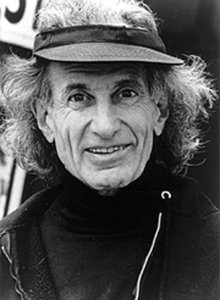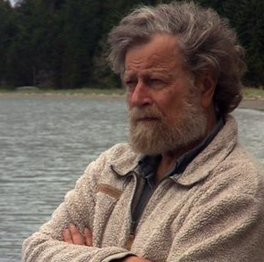Electronic music broadly is a group of music genres that employ electronic musical instruments, circuitry-based music technology and software, or general-purpose electronics in its creation. It includes both music made using electronic and electromechanical means. Pure electronic instruments depended entirely on circuitry-based sound generation, for instance using devices such as an electronic oscillator, theremin, or synthesizer. Electromechanical instruments can have mechanical parts such as strings, hammers, and electric elements including magnetic pickups, power amplifiers and loudspeakers. Such electromechanical devices include the telharmonium, Hammond organ, electric piano and electric guitar.

Surround sound is a technique for enriching the fidelity and depth of sound reproduction by using multiple audio channels from speakers that surround the listener. Its first application was in movie theaters. Prior to surround sound, theater sound systems commonly had three screen channels of sound that played from three loudspeakers located in front of the audience. Surround sound adds one or more channels from loudspeakers to the side or behind the listener that are able to create the sensation of sound coming from any horizontal direction around the listener.

Henry Dreyfuss Brant was a Canadian-born American composer. An expert orchestrator with a flair for experimentation, many of Brant's works featured spatialization techniques.
Ellen Fullman is an American composer, instrument builder, and performer. She was born in Memphis, Tennessee, and is currently based in the San Francisco Bay Area. She is known for her 70-foot (21-meter) Long String instrument, tuned in just intonation and played with rosin-coated fingers.

Michael Tilson Thomas is an American conductor, pianist and composer. He is Artistic Director Laureate of the New World Symphony, an American orchestral academy based in Miami Beach, Florida, Music Director Laureate of the San Francisco Symphony, and Conductor Laureate of the London Symphony Orchestra.

Roger Lee Reynolds is an American composer. He is known for his capacity to integrate diverse ideas and resources, and for the seamless blending of traditional musical sounds with those newly enabled by technology. Beyond composition, his contributions to musical life include mentorship, algorithmic design, engagement with psychoacoustics, writing books and articles, and festival organization.
Sound design is the art and practice of creating soundtracks for a variety of needs. It involves specifying, acquiring or creating auditory elements using audio production techniques and tools. It is employed in a variety of disciplines including filmmaking, television production, video game development, theatre, sound recording and reproduction, live performance, sound art, post-production, radio, new media and musical instrument development. Sound design commonly involves performing and editing of previously composed or recorded audio, such as sound effects and dialogue for the purposes of the medium, but it can also involve creating sounds from scratch through synthesizers. A sound designer is one who practices sound design.

Morten Johannes Lauridsen is an American composer and academic teacher. A National Medal of Arts recipient (2007), he was composer-in-residence of the Los Angeles Master Chorale from 1994 to 2001, and is the distinguished professor emeritus of composition at the University of Southern California Thornton School of Music, where he taught for fifty-two years until his retirement in 2019.

Other Minds is an American nonprofit organization based in San Francisco. It was founded In 1992 by Charles Amirkhanian and Jim Newman. According to their mission statement, the organization is dedicated to the "encouragement and propagation of contemporary music."

The American Conservatory Theater (ACT) is a nonprofit theater company in San Francisco, California, United States, that offers both classical and contemporary theater productions. It also has an attached acting school.
Roger Kleier is an American composer, guitarist, improviser, and producer.

Pamela Z is an American composer, performer, and media artist best known for her solo works for voice with electronic processing. In performance, she combines various vocal sounds including operatic bel canto, experimental extended techniques and spoken word, with samples and sounds generated by manipulating found objects. Z's musical aesthetic is one of sonic accretion, and she typically processes her voice in real time through the software program Max on a MacBook Pro as a means of layering, looping, and altering her live vocal sound. Her performance work often includes video projections and special controllers with sensors that allow her to use physical gestures to manipulate the sound and projected media.
Mark Grey is an American classical music composer, sound designer and sound engineer.

Nathaniel Stookey is an American composer and musician.
Soundwave Biennial Festival is a sound, art, and music festival that happens every two years for two months in San Francisco.
Gareth Loy is an American author, composer, musician and mathematician. Loy is the author of the two volume series about the intersection of music and mathematics titled Musimathics. Loy was an early practitioner of music synthesis at Stanford, and wrote the first software compiler for the Systems Concepts Digital Synthesizer. More recently, Loy has published the freeware music programming language Musimat, designed specifically for subjects covered in Musimathics, available as a free download. Although Musimathics was first published in 2006 and 2007, the series continues to evolve with updates by the author and publishers. The texts are being used in numerous math and music classes at both the graduate and undergraduate level, with more current reviews noting that the originally targeted academic distribution is now reaching a much wider audience. Music synthesis pioneer Max Mathews stated that Loy's books are a "guided tour-de-force of the mathematics of physics and music... Loy has always been a brilliantly clear writer. In Musimathics, he is also an encyclopedic writer. He covers everything needed to understand existing music and musical instruments, or to create new music or new instruments. Loy's book and John R. Pierce's famous The Science of Musical Sound belong on everyone's bookshelf, and the rest of the shelf can be empty." John Chowning states, in regard to Nekyia and the Samson Box, "After completing the software, Loy composed Nekyia, a beautiful and powerful composition in four channels that fully exploited the capabilities of the Samson Box. As an integral part of the community, Loy has paid back many times over all that he learned, by conceiving the (Samson) system with maximal generality such that it could be used for research projects in psychoacoustics as well as for hundreds of compositions by a host of composers having diverse compositional strategies."
Gray Area Foundation for the Arts, Inc. is a 501(c)3 non-profit art organization which hosts exhibitions, music events, software and electronics classes, a media lab, and a resident artist program.
Lumerians is a San Francisco Bay Area-based quartet which has a psychedelic "mindbender" space rock sound. The group is notable for performances characterized by "transcendent live video projections" and having "incredible visuals", according to one music critic. One critic described the band as "Oakland's prize pony in the Bay Area gloom-folk horse race". The sound has been compared to Krautrock with overtones of 1960s music.
Spatial music is composed music that intentionally exploits sound localization. Though present in Western music from biblical times in the form of the antiphon, as a component specific to new musical techniques the concept of spatial music was introduced as early as 1928 in Germany.

Dave Malloy is an American composer, playwright, lyricist, and actor. He has written several theatrical works, often based on classic works of literature. His most well known work is the Tony Award winning Natasha, Pierre & The Great Comet of 1812, an electropop opera based on War and Peace. His other works include Moby-Dick, an adaptation of Herman Melville's classic novel; Octet, a chamber choir musical about internet addiction; Preludes, a musical fantasia set in the mind of romantic composer Sergei Rachmaninoff; and Ghost Quartet, a song cycle about "love, death, and whiskey".











